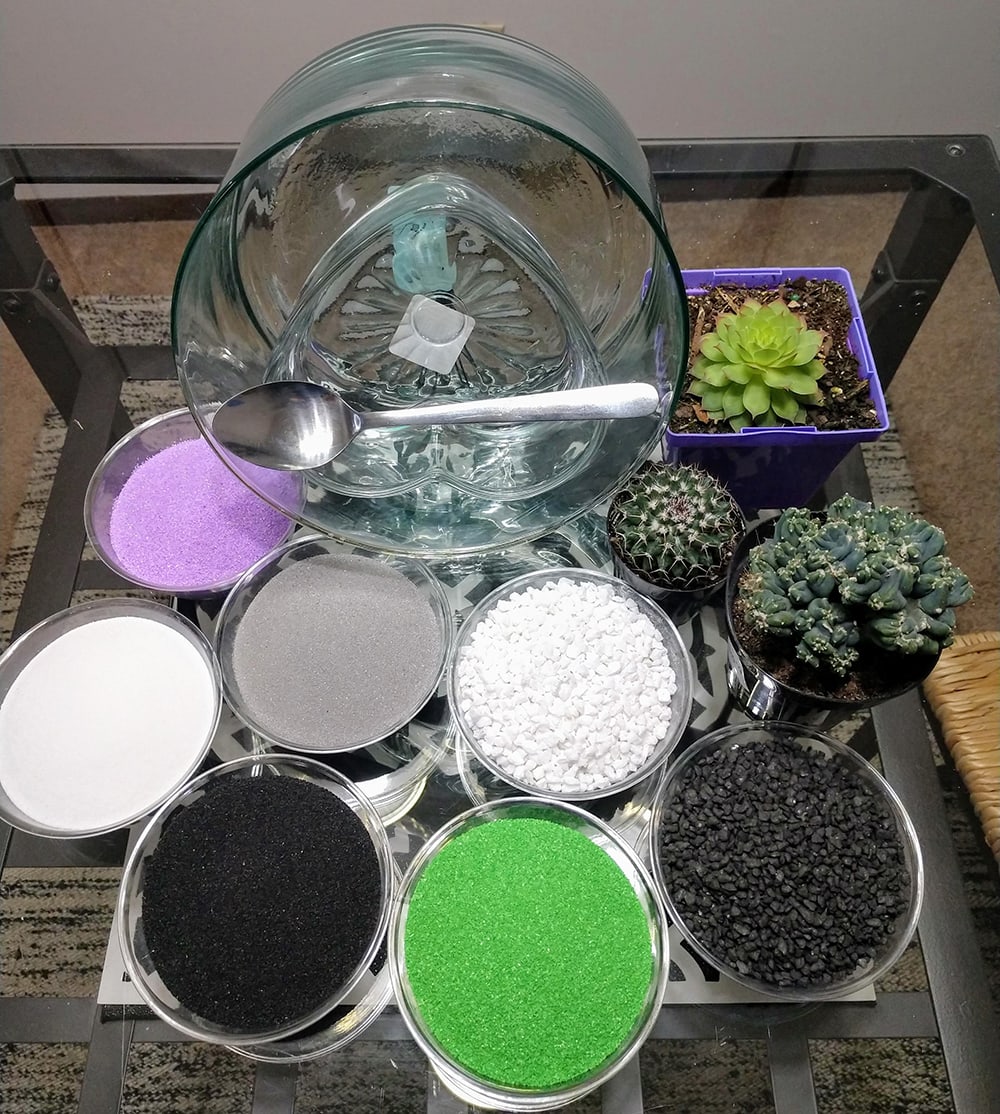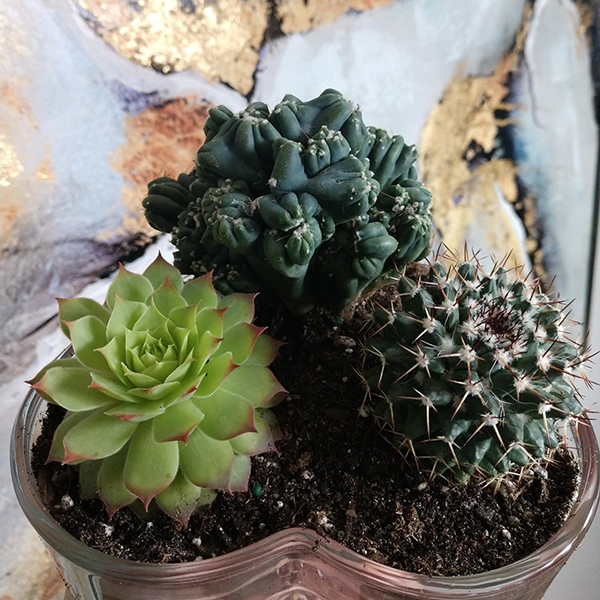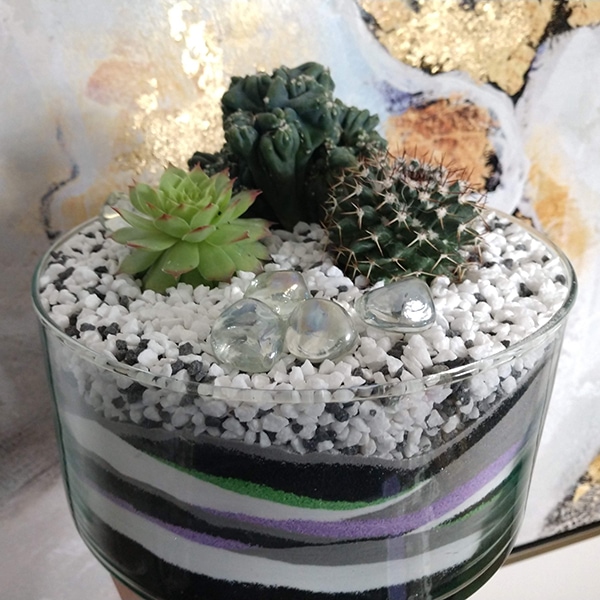Succulents—which include cacti, aloe, sedum and other plants that store water in their stems, roots and leaves—have grown in popularity in recent years. Their geometric shapes, fun colors and general ease of care make them a staple in many homes.
 There are so many fun ways to display succulents, and it’s easy to create beautiful, one-of-a-kind planters to suit your personal style! Utilizing glass containers for sand art with succulents planted within is an excellent way to showcase your plants and artistic skill—and make something that can match almost any décor. Let’s walk through the basics of making your own sand art succulent creation.
There are so many fun ways to display succulents, and it’s easy to create beautiful, one-of-a-kind planters to suit your personal style! Utilizing glass containers for sand art with succulents planted within is an excellent way to showcase your plants and artistic skill—and make something that can match almost any décor. Let’s walk through the basics of making your own sand art succulent creation.
Gather Your Materials
Plants: Before purchasing succulents, first determine your available lighting. Succulents that work best in low-light areas include Haworthia, Aloe, Gasteria and Sansevieria (mother-in-law’s tongue or snake plant). Those that require more light would include types of Agave, Echeveria, Senecio and Aeonium, as well as most types of cacti. If you choose to use multiple plants, make sure they all have similar lighting requirements. 
Containers: There are so many shapes and sizes to choose from, but when choosing the display container, keep in mind that you will need something large enough to house a smaller glass or plastic container inside of it. This secondary container, such as an old jelly jar, is going to house the plants and will be hidden by the sand. There should be no drainage holes in the plant container—if water or soil leaks into your sand art it will be ruined.
Sand: Finer, more powdery sands work best for this purpose. A thicker/chunkier grain doesn’t allow crisp lines between colors, and it’s harder to work with.
Start Creating!
When you remove your plants from the store-bought container, ruffle up the roots and remove any unnecessary soil. Plant them in the smaller, secondary container and provide a small drink of water if the soil is dry. Before you place this container into the main container, pour some sand on the bottom. The sand will help hold the secondary container in place and soften the impact of glass on glass.
 Once you have planted and placed the secondary container, you can start layering the sand, gently pouring it to create different dimensions. Don’t overthink it, especially if it’s your first time. Experiment and have fun! Keep in mind that it is art, and striving for perfection sometimes causes the most error. Do not drown the plants in sand. Cover up only what is necessary in order to hide the secondary container. For extra decoration, I usually top off the sand with small rocks, tumbled glass or moss. Enjoy this unique moment of playing with plants while letting your creative juices flow! PM
Once you have planted and placed the secondary container, you can start layering the sand, gently pouring it to create different dimensions. Don’t overthink it, especially if it’s your first time. Experiment and have fun! Keep in mind that it is art, and striving for perfection sometimes causes the most error. Do not drown the plants in sand. Cover up only what is necessary in order to hide the secondary container. For extra decoration, I usually top off the sand with small rocks, tumbled glass or moss. Enjoy this unique moment of playing with plants while letting your creative juices flow! PM
Ethan Wise is manager and horticulturist at Hoerr Nursery in Peoria. For more information, visit hoerrnursery.com.




